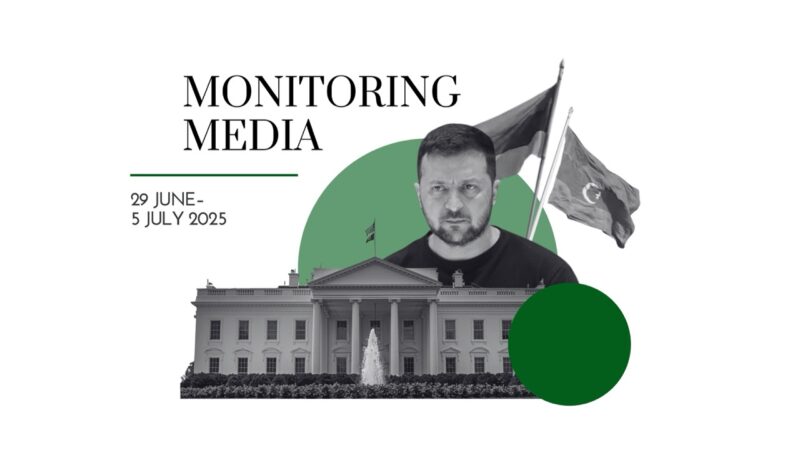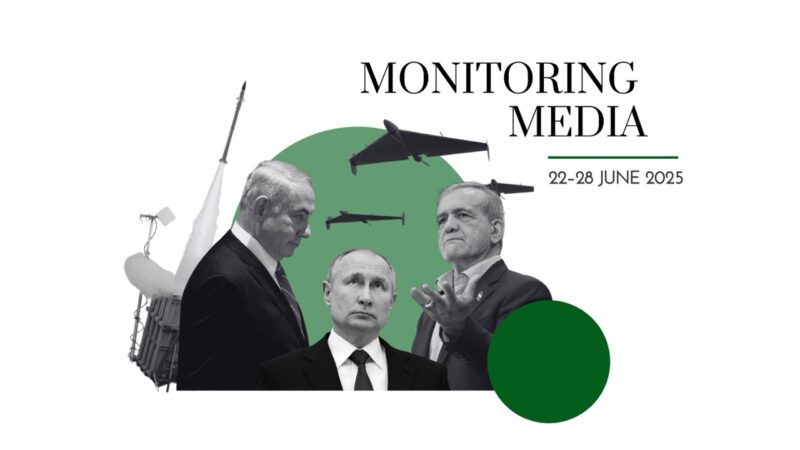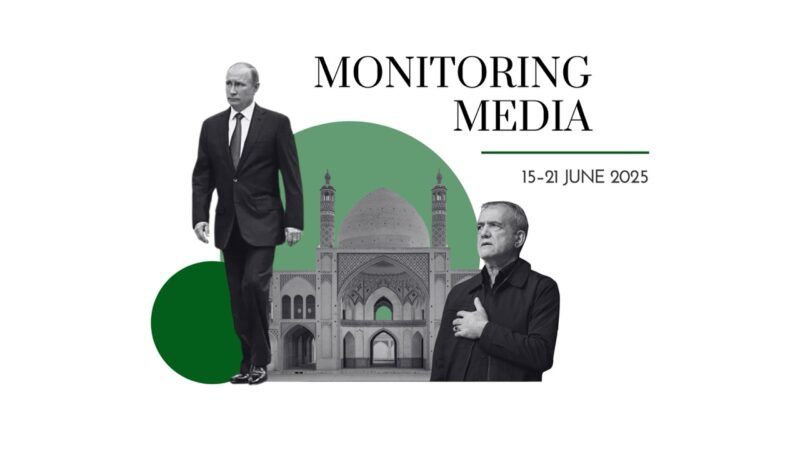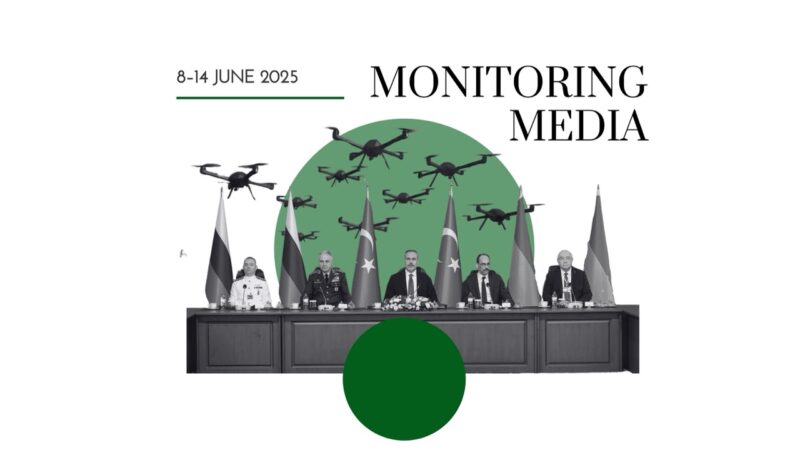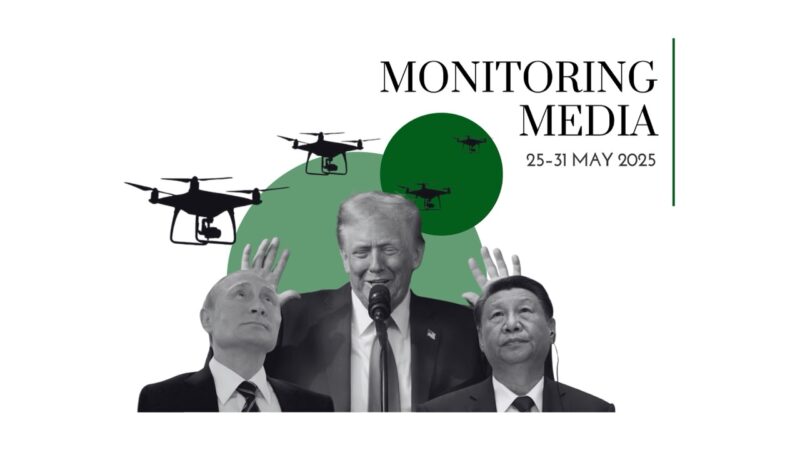Haphazardly mobilized Russian soldiers not likely to influence the war

CIUS weekly report on media coverage of Ukrainian affairs, 19–25 September 2022
Three North American magazines (The Wall Street Journal, The New York Times, and Atlantic Council) were selected to prepare this report on how the situation in Ukraine has been portrayed in the media during the past week (19–25 September 2022). The sample of magazines was created based on their impact on public opinion as well as on their professional reputation, popularity among the readership, and topical relevance. These three magazines represent the centrist and liberal political spectrums.
This report covers only the most-read and relevant articles about Ukraine, as ranked by the respective magazines themselves in the past week. Its scope covers promoted articles on home pages and articles from special sections on Ukraine, with the hashtag #Ukraine, from the paper editions of the magazines, and about Ukraine from opinion columns and editorials.
Topics featured in the selected articles:
- Ukraine’s current affairs: Ukraine continues its counteroffensive; some of Ukraine’s captive soldiers who defended Azovstal in Mariupol are released;
- The world and Ukraine: US helps EU to overcome its economic difficulties; US considers supplying high-tech drones to Ukraine; Poland’s educational infrastructure ready to accommodate children from Ukraine; international businesses continue operating in Russia;
- Russia at war: Kremlin seriously miscalculated goals and means of its invasion; Kremlin’s nuclear blackmailing is a sign of its weakness; Putin gets personally engaged in commanding demotivated troops; present mobilization in Russia will have limited effect on the war; Russia committing more crimes, including mobilizing Ukrainians from occupied territories into its army; Russia aims to re-educate young Ukrainians on occupied territories.
The most common arguments:
ZSU (Armed Forces of Ukraine) crosses Oskil River and continues the counteroffensive in Kharkiv oblast. Ian Lovett (Wall Street Journal) provides an overview of Ukraine’s successes in the continuing counteroffensive in the north. Namely, it established control over the left bank of the Oskil River (which means that almost all of Kharkiv oblast has been liberated) and has prevented the Russian army from erecting a new defensive line to further fortify Luhansk oblast. At the same time, Russia seems to be searching for weak points in Ukraine’s flanks in the freshly liberated territories and trying to stabilize the front line. To this end, it has started actively deploying combat jets, four of which were shot down by Ukraine last week. Lovett notes that its lack of air superiority leads to an overall fragility and vulnerability of Russia’s operations in Ukraine. Lovett also writes that being unable to stop the Ukrainians on the battlefield, the Russians are resorting to shelling civilian infrastructure and strategic objects such as nuclear power plants. Finally, Lovett concludes that discontent with the Kremlin’s actions is growing at home, and public figures are daring to raise their voices against the war (e.g., legendary singer Alla Pugacheva). At the same time, Russia’s neighbours—Poland, Estonia, Latvia, and Lithuania—have closed their borders to the federation’s citizens.
Ukraine’s counteroffensive in the south is grinding, gruelling, and steep in casualties. Jeffrey Gettleman (New York Times) writes that “the offensive in the south was the most highly anticipated military action of the summer…Ukraine is regaining territory, though slowly, and President Vladimir V. Putin of Russia is concerned enough about suffering an embarrassing setback that he has refused to let his commanders retreat from the city of Kherson.” Through narrating individual war stories, Gettleman emphasizes that liberating the territories around Kherson is a challenging task for the Ukrainian armed forces, as the occupiers have dug in deeply there. However, to combat the outcomes of the wide-scale fake referendums, Ukraine has no viable option but to attack. It is motivated to liberate Kherson and its suburbs before the October rains “turn the roads here into impassable sludge.” To this end, the offensive comes at a great cost. According to anonymous soldiers and commanders whom Gettleman interviewed last week, Ukraine’s losses on the battlefield are “high” to “massive.” The majority of Ukraine’s soldiers are killed by artillery shelling as Russia, whose best units were moved from the north in order to defend Kherson, retains its superiority in heavy weaponry. Gettleman concludes that the Kremlin scrutinized Kyiv’s public statements carefully and prepared its troops accordingly to withstand the offensive in the crucial south. Russia is keeping its ground, highly cognizant that the fall of Kherson would open the road to Crimea for the Ukrainian army. In turn, Ukraine has asked the West for more ammunition and artillery, in order to save lives and dampen Russia’s firing potential before it advances to regain the south.
Ukraine and Russia carry out the largest prisoners’ swap to date. Jared Malsin (Wall Street Journal) writes that “Russia and Ukraine released 270 prisoners, including American and British nationals, in agreements brokered by Turkey and Saudi Arabia.” The prisoners that Ukraine received included soldiers and officers that defended the Azovstal plant in Mariupol during the first months of the all-out invasion. In turn, Russia received its officers as well as Viktor Medvedchuk, a “longtime pro-Russian leader in Ukraine and one of Mr. Putin’s personal confidants.” As part of a separate deal brokered by the crown prince of Saudi Arabia, Russia agreed to release ten non-Ukrainian prisoners, in particular citizens of the US and UK who had been fighting for Ukraine. These swap agreements were so successful not least thanks to the neutral stance of Turkey’s President Recep Tayyip Erdogan regarding the war, who managed to find a common language with both Kyiv and the Kremlin, as well as the relatively friendly relations between Prince Mohammed Bin Salman and Vladimir Putin.
Washington working on mitigating Russia’s energy war with Europe. Chris Cameron and Helene Cooper (New York Times) report that while the US and NATO’s support for Ukraine remains firm, anxiety is spreading due to Russia’s energy war declared against the EU: “The Russian invasion has sent energy prices soaring and created what could become the continent’s worst economic crisis in a generation.” In light of this anxiety, the US should do more than simply fund Ukraine’s resistance and mobilize the world to support the defending side. The US should also help to alleviate the EU’s energy shortages in order to keep the Western camp rallied and prevent its fragmentation. Signs of such a fragmentation are already visible: “Material support for Ukraine from Europe has faded. The total of new commitments of military and financial aid from six of the largest European countries decreased in May and dropped sharply in June.” According to Cameron and Cooper, “Germany in particular has fallen short, in spite of its earlier rhetoric” and public opinion that is clearly pro-Ukraine. Germany has yet to send its Leopard 2 tanks to Ukraine, a move that is reluctantly discussed among leading decision makers in Berlin. That said, Cameron and Cooper expect that regardless of all anxieties the EU will keep a united front against Russia.
Pentagon advises arming Ukraine with advanced drones. Gordon Lubold and Nancy A. Youssef (Wall Street Journal) state that a bipartisan group of “17 members of Congress are urging Defense Secretary Lloyd Austin to provide advanced drones to Ukraine, saying the technology could be key to giving Kyiv a battlefield advantage.” Up to now, the Biden administration resisted such a move for two reasons: it could aggravate the Kremlin, and sensitive know-how may fall into Russia’s hands. The 17 legislators have requested that Ukraine be provided the MQ-1C Gray Eagle, the MQ-9A Reaper, or both, in order to save as many lives of Ukrainian soldiers as possible. When deployed on the battlefield alongside high-mobility artillery systems (HIMARS), the advanced drones will increase the effectiveness of Ukraine’s army by a large margin. General Atomics, the company manufacturer of Gray Eagles, claims that it is ready to start training operators from Ukraine immediately. For its part, Ukraine has requested such drones since the earliest days of the invasion.
Polish educational institutions agree to accept and school pupils from Ukraine. Writing about the predicament of educating young Ukrainians in Poland, Tamar Jacoby (Wall Street Journal) touches upon many related social issues that Ukrainian migrants have to face. Jacoby examines the case of Primary School No. 12 in Krakow to illustrate how the staff overcomes language barriers, provides psychological support, and assists in establishing amiable relations between children from different backgrounds. Language appears to be the most challenging issue for Ukrainian pupils, preventing them from actively participating in class. Some of these pupils have learned Polish quickly through interacting with their peers, while others are distracted and overburdened by extracurricular online classes in Ukraine. Jacoby also writes that over 2 million Ukrainians, predominantly women and children, have been living in Poland since February 2022. The majority of them find it hard to adapt to their new realities: acquiring basic property, securing a job and housing, finding friends, or simply progressing in their studies. That said, as Jacoby highlights, Polish society continues to be very supportive of Ukrainians, thus encouraging them to contribute to that society.
Most multinational companies remain in Russia, funding its invasion of Ukraine. Diane Francis (Atlantic Council) starts by praising the position of McDonald’s company, which closed all of its Russian branches and put the property up for sale in a protest move against the invasion of Ukraine. However, such devotion to values has proved to be rare among big businesses, as “three-quarters of the most profitable foreign multinationals remain in Russia,” yet stay silent about it. By paying corporate and payroll taxes to the Kremlin, these companies cannot be considered neutral in the context of the Russo-Ukrainian war. They are also breaching their commitments to respect human rights under the UN Guiding Principles for Business and Human Rights (UNGPs), to which many big businesses are signatories. Francis concludes that “the Russian invasion of Ukraine has left international companies in a deeply compromised position. They are understandably criticized for not exiting the Russian market and face the prospect of punishment from Russia if they do attempt to leave…Despite these challenges, those who remain in Russia can expect little sympathy and will continue to face pressure to depart.”
The invasion of Ukraine has been a disaster for Russia in general and for Putin personally. Anders Åslund (Atlantic Council) argues that Putin risks going down in history as Russia’s worst ruler, due to his poor decision to invade Ukraine: “Seven months after Russian tanks first crossed the border, his depleted and deeply demoralized army has ground to a halt and the military initiative has passed decisively to the advancing Ukrainians.” Åslund argues that Putin’s unjustified desire to conquer and eliminate Ukraine has cost Russia greatly: the personal freedoms of citizens have been restricted, xenophobia and isolationism have become more socially acceptable, modernization of the economy has stalled, and the state has devolved into a pariah associated with the spread of lies around the world. Åslund concludes that “the catastrophic consequences of Putin’s decision to invade Ukraine have helped cast an unforgiving light on the rest of his reign.” If Ukraine develops its battlefield initiative and eventually gains a victory, Russian society and the current Kremlin regime will suffer a major defeat, similar to the ones in the Crimean War (1853–56), the Russo-Japanese War (1904–5), World War I (1914–17), and the Afghan War (1979–88). All these defeats initiated profound changes in Russia that led to more transparency and the liberalization of governance. This is what Åslund expects to observe in the aftermath of the Russo-Ukrainian war.
Putin’s nuclear ultimatum is a sign of desperation that is unlikely to change how the war progresses. Peter Dickinson (Atlantic Council) writes that Putin’s threat of using nuclear weapons is one of the last measures he possesses to secure Russia’s control over the territories conquered thus far: “The Russian ruler is betting that the possibility of a nuclear escalation will persuade Western leaders to stop arming Ukraine and convince them instead to pressure Kyiv into accepting a negotiated settlement that would leave around 20% of Ukrainian land under Russian control.” To try legitimizing control over the occupied lands, Putin has pushed forward with fake referendums on expanding of Russia’s borders into Ukraine regardless of the international condemnation of such a move. Dickinson also highlights that instead of running a quick and victorious war, Russia is heading toward one of the most humiliating military defeats in its history. This defeat may be so grave that it could undermine the domestic integrity of the federation. Putin has presumably started to understand all the risks coming from his miscalculated decision (i.e., the alleged “biggest geopolitical blunder of the twenty-first century”) and has thus resorted to nuclear threats. He hopes to incite the “West’s collective fear of a nuclear apocalypse” and “snatch victory from the jaws of defeat.” That said, considering the Western commitment to Ukraine, Putin’s nuclear blackmailing is unlikely to help Russia keep the occupied territories and win the war.
Putin plans Russia’s operations in Ukraine personally and rejects a retreat from Kherson. Julian E. Barnes, Helene Cooper, Eric Schmitt, and Michael Schwirtz (New York Times) present evidence of Putin’s ambition to influence the planning of military operations in Ukraine. This ambition requires hands-on management, as well as placing political objectives over military reasonability. Recently, Putin rejected the suggestion made by his commanders to withdraw from the city of Kherson—a decision that could have saved equipment and lives but would also have led to yet another public discrediting of the President and his imaginings of victory. Being focused on victory at all costs, Putin creates tensions within the command, lowers morale among the invading troops, who lack supplies, and stirs dissatisfaction with the mobilization among ordinary citizens. Besides holding on to Kherson today, Putin insisted on attacking Kyiv in the first days of the war, while his advisors had warned that Russia “was going to war with insufficient troops and weaponry.” As a result, Putin has now grown into a hardline proponent of “no further retreats,” a strategy that may result in one more “mismatch between [his] political objectives and the military means to attain them.”
Russia’s mobilized soldiers will not change the power balance on the battlefield any time soon. Thomas Grove (Wall Street Journal) writes that the Kremlin finally decided to mobilize more than a quarter of a million soldiers for the invasion, to demonstrate the massive human resource of Russia’s army. Apart from this, “Russia’s goal [with the mobilization] is to harden the battle positions that it gained in Ukraine’s east and south and prevent further losses like those it suffered earlier this month in the northeast.” In turn, Ukraine is inclined to continue with its defensive strategy that has proven itself: a combination of high-precision Western weaponry, nimbleness of its force structures, and the high morale of its troops. Moreover, Ukraine still has time for daring new offensives before the new Russian recruits complete the necessary training and arrive at the front. Even when this happens, as Groves believes, the logic of warfare will not change much, for boosted numbers of soldiers will serve as a poor remedy for gaps in logistics, insufficient battle cohesion, and poor leadership.
Russia mobilizing Ukrainians in occupied territories to fight against their own state. Marc Santora (New York Times) highlights that the Kremlin’s mobilization campaign is focused on recruiting as many soldiers as possible from as many places as possible, including the occupied territories of Ukraine. The Kremlin’s drive “to compel Ukrainians to battle other Ukrainians is part of a broader, if risky, effort…to mobilize hundreds of thousands of new fighters as its forces suffer huge casualties and struggle to hold off Ukrainian advances in the east and south.” This drive should be placed in the context of the fake referendums, the results of which, according to the Kremlin, will justify bringing the occupied territories of Ukraine under Russia’s nuclear umbrella. In other words, if Ukraine continues liberating Kherson and other oblasts after the pseudo-referendum results are announced, the Kremlin will consider fighting with locally recruited soldiers and deploying nuclear weaponry. In this light, Kyiv has been working on disseminating counter-mobilization narratives among Russians, as well as encouraging Ukrainians in the occupied territories to avoid joining Russia’s army in every way possible. Santora pays specific attention to Crimea, where local Tatars are being actively mobilized. The latter deliberate mobilization may lead to a new genocide of this ethnicity.
Russia’s criminal treatment of Ukrainian POWs the rule rather than the exception. Marc Santora and Anna Lukinova (New York Times) describe tragic stories about the exhumation of Ukrainian people killed by Russians and buried near Izium. In particular, they touch upon the discovery of a “blue and yellow bracelet around the dead man’s wrist” that sent a symbolic message that “Ukraine lives on, even if some of its people do not.” The wrist belongs to Serhiy Sova, a soldier who had been defending Ukraine since the beginning of the war in 2014. Serhiy’s was one of 338 bodies recovered from a mass grave in Izium. In some pits, four people were buried at a time. Many bodies carry signs of mine and blast injuries, as well as torture. Santora and Lukinova dedicate much attention to Serhiy and write about the reasons behind his joining Ukraine’s army, his battle experience, convictions, and his last talk with family.
Russia aims to indoctrinate young Ukrainians in the occupied territories. Oleksandr Pankieiev (Atlantic Council) reports that the school year in Ukraine started in dire conditions, as never before. In free Ukraine, “lessons [are] being regularly interrupted by air raid sirens.” In the occupied territories, “schools under Russian control are being forced to adopt a Kremlin-curated curriculum designed to demonize Ukraine.” Pankieiev emphasizes that children have become among the major victims and targets of Russia’s actions in Ukraine: “Hundreds have been killed, millions have been displaced…thousands are thought to have been subjected to forced deportation to the Russian Federation.” Moreover, “the Kremlin is now targeting young Ukrainians as part of its campaign to eradicate Ukrainian national identity in areas under Russian control.” For this reason, Ukrainian teachers in occupied districts are being forced to accept the invader’s educational curriculum. If not, they are replaced with loyal teachers from Russia who do more propaganda than education. Those parents who do not want to have their children taught in Russia-controlled schools face fines and possible imprisonment. All this leads to the fact that the children in occupied territories are increasingly exposed to the Russian version of history which glorifies the Soviet legacy and usually denies the right of Ukraine to a sovereign existence. Pankieiev concludes that the fate of children who undergo the Kremlin’s indoctrination “is a powerful argument for the urgent liberation of Russian-occupied Ukraine.”
